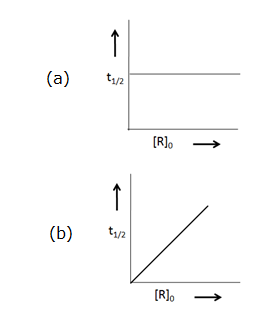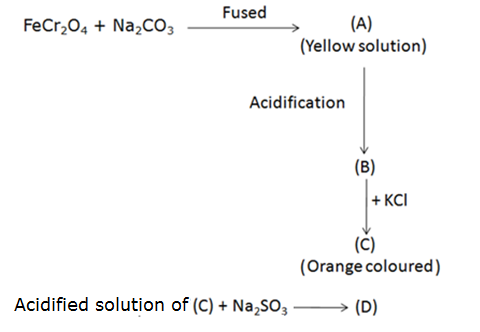Chemistry:2019:CBSE:[All India]: Set-III
To Access the full content, Please Purchase
-
Q1
Out of Chlorobenzene and Cyclohexyl chloride, which one is more reactive towards nucleophilic substitution reaction and why?
Marks:1View AnswerAnswer:
Out of Chlorobenzene and Cyclohexyl chloride, Cyclohexyl chloride is more reactive towards nucleophilic substitution reaction due to partial double bond character of C-Cl bond in Chlorobenzene which is difficult to break. Also chlorobenzene is resonance stablised.
-
Q2
Arrange the following in decreasing order of solubility in water:
(C2H5)2NH, C2H5NH2, C6H5NH2
Marks:1View AnswerAnswer:
The decreasing order of solubility in water is
C2H5NH2 > (C2H5)2NH > C6H5NH2
-
Q3
What type of colloid is formed when a solid is dispersed in a liquid? Give an example.
Marks:1View AnswerAnswer:
Sol is formed when a solid is dispersed in a liquid. Paint is an example of sol.
-
Q4
Out of KCl and AgCl, which one shows Schottky defect and why?
Marks:1View AnswerAnswer:
Schottky defect is shown by ionic compounds having small difference in the size of cations and anions. Out of KCl and AgCl, it is shown by KCl, due to comparable sizes of K+ and Cl– ions.
-
Q5
Why does ZnO appear yellow on heating?
Marks:1View AnswerAnswer:
When zinc oxide is heated, it loses oxygen and there is an excess of Zn2+ ions. The number of excess Zn2+ ions trapped in the interstitial sites is equal to the number of electrons trapped in neighbouring interstitial sites. The presence of free electrons gives rise to the enhanced electrical conductivity and yellow colour to the crystal.
-
Q6
What is the difference between amylose and amylopectin?
Marks:1View AnswerAnswer:
Amylose is a straight chain polymer of α-D-glucose and is soluble in water.
Amylopectin is a branched chain polymer of α-D-glucose and insoluble in water.
-
Q7
Write the products obtained after hydrolysis of lactose.
Marks:1View AnswerAnswer:
Lactose on hydrolysis with dilute acid gives equimolar mixture of β-D-glucose and β-D-galactose.
-
Q8
Define order of reaction. Predict the order of reaction in the given graphs:

Where [R]0 is the initial concentration of reactant and t1/2 is half-life.
Marks:2View AnswerAnswer:
The sum of powers of the concentration of the reactants in the rate law expression is called the order of that chemical reaction.
a) First order (The half-life of a first order reaction is independent of initial concentration of the reacting species.)
b) Zero order (For zero order reactions, the half-life depends on the initial concentration of reactant.)
-
Q9
Give reasons:
(a) An increase in temperature is observed on mixing chloroform and acetone.
(b) Aquatic animals are more comfortable in cold water than in warm water.
Marks:2View AnswerAnswer:
(a) The interactions between chloroform and acetone are stronger than the interactions between either pure chloroform or acetone. Therefore, an increase in temperature is observed on mixing chloroform and acetone.
(b) The solubility of oxygen in water increases with decrease in temperature due to which the aquatic animals are more comfortable in cold water rather than in warm water.
-
Q10
When FeCr2O4 is fused with Na2CO3 in the presence of air it gives a yellow solution of compound (A). Compound (A) on acidification gives compound (B). Compound (B) on reaction with KCl forms an orange coloured compound (C). An acidified solution of compound (C) oxidises Na2SO3 to (D). Identify (A), (B), (C) and (D).
Marks:2View AnswerAnswer:





